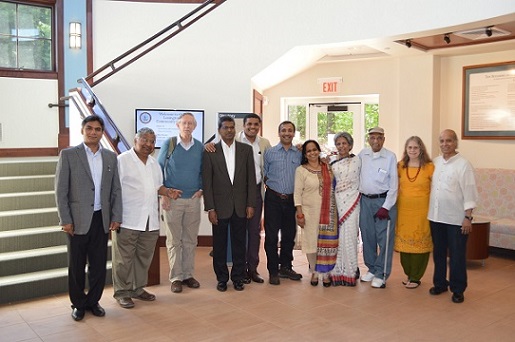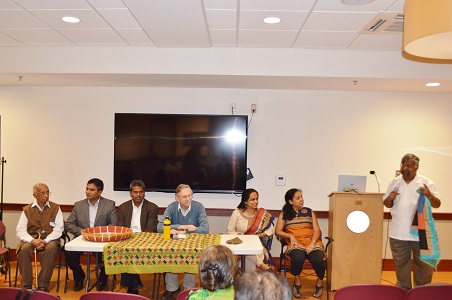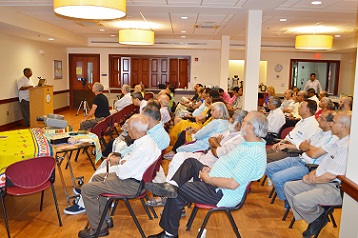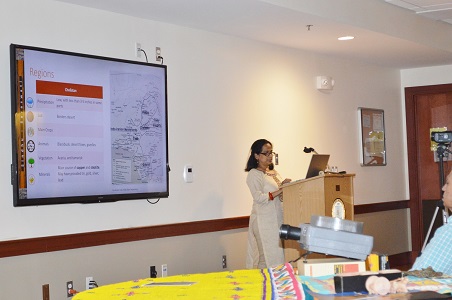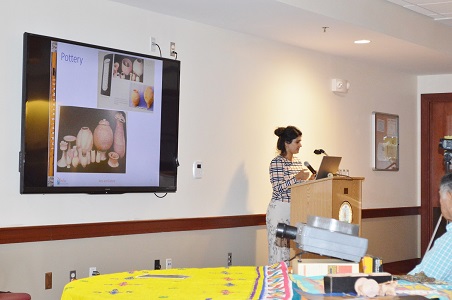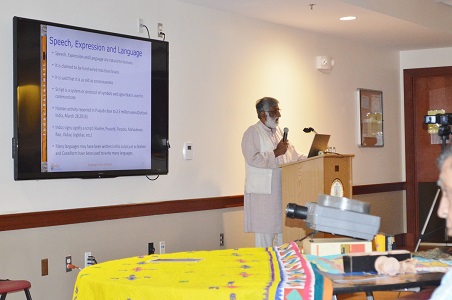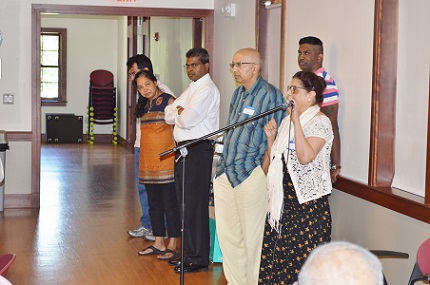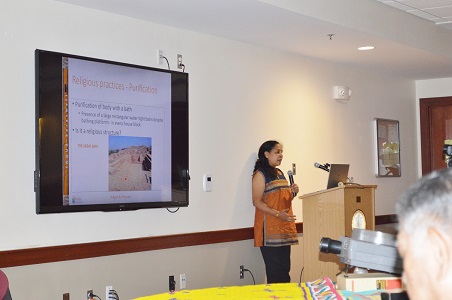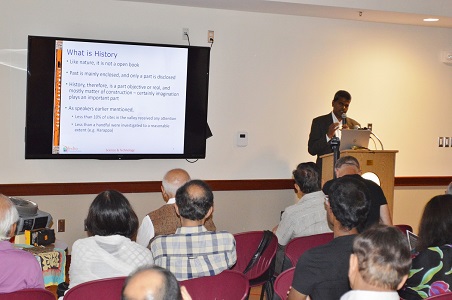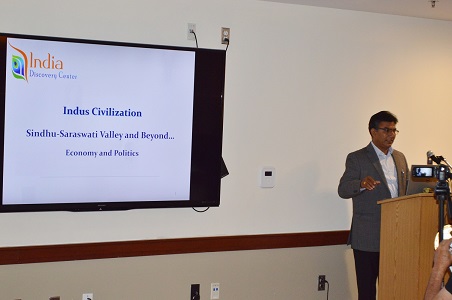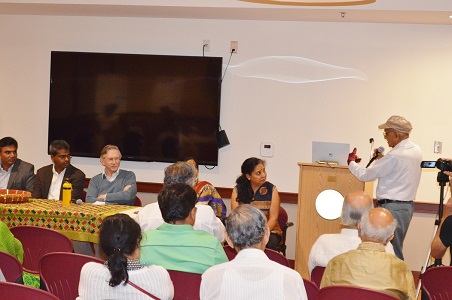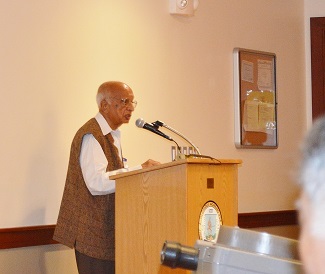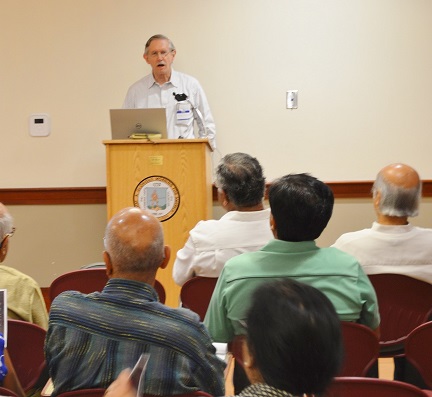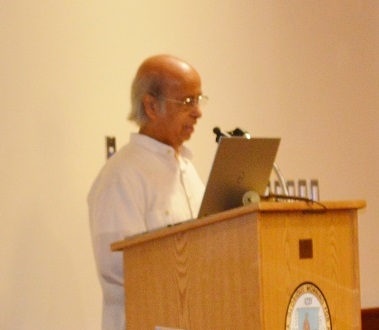Contribute
| Innovation And Industry, The Hallmark Of Indus Civilization |
Prem Nagar
08/03/2016
"Innovation and Industry, the hallmark of Indus Civilization†– The ruins of the Indus Civilization were accidentally discovered in 1856 by the British engineers when they were laying railway lines from Karachi to Lahore in the modern day Pakistan. Strongly built proportional bricks were used as the foundation for 93 miles of the railway lines before the engineers realized the antiquity of the bricks. That the bricks were technological marvels five thousand years ago and that a sophisticated urban civilization flourished in the area was not understood until archaeological excavation began in the 1920’s. Then came the strange colonial hypothesis that the inhabitants were slaughtered by marauding horse-riding Aryans and caused its extinction! While the hypothesis has proved to be imaginary, research continues on the inhabitants, their technological excellence and the eventual deurbanization of the region in the second millennium BCE. India Discovery Center (IDC), a newly formed non-profit organization consisting of academics, technologists and other professionals, has undertaken the task of “discovering†India from its cultural history point of view. The goal is to analyze different aspects of past cultures of the region such that one may understand the magnificent achievements of Indian civilization as well as its structural failures through time. In the first phase, the research focused on the Indus Civilization. The historical narrative for this part is divided into six independent tracks: Geography and People, Art and Culture, Language and Literature, Philosophy and Religion, Science and Technology, and finally Economics and Politics. Six volunteer researchers - Swati Dave, Srabonti Bandyopadhyay, Jaspal Singh, Chandrika Govardhan, Krishna Gazula and Sanjeev Tripathi - researched a track each matching their individual interest. The team members presented their findings in sequence in a daylong IDC hosted seminar at Lexington Community Center, MA, on 23 July 2016. Dr. Richard Meadow, the Harvard archaeologist leading the Harappa project, was the Chief Guest. About eighty individuals with various backgrounds and ethnicities joined the seminar at 10 AM, the majority staying till the closing time of 4 PM. There were informative presentations and lively discussion with questions and comments. Dr. Bijoy Misra, the President of India Discovery Center, opened the meeting and articulated his vision of discovering an Indian identity on behalf of the children of the emigrants from the subcontinent. India is a living culture and one needs to map it with the tools of science, archaeology and anthropology. He gave an overview of the efforts by the India Discovery Center to proceed with the project through historical overviews and objective interpretation. He invited all to participate in IDC’s biweekly meetings and conduct research into the known cultural history of the subcontinent by applying the new multidisciplinary tools of technology. Dr. Sajed Kamal endorsed the need of the ethnic cultural studies in the fabric of American pluralism. He blessed the project on behalf of the diverse population of the subcontinent. Freedom of inquiry is a privilege and the discovery of one’s heritage is a duty. As a poet, artist, author and humanist, he championed the spirit of exploring personal identity. His voice echoed the call for freedom in his native Bangladesh. Dr. Richard Meadow opened the technical part of the seminar with an overview of the findings in the Indus civilization with a lecture entitled “Indus Civilization of Northwestern South Asiaâ€. The vast subcontinent of India is lately politically divided into various local units with the Sub-Himalayan Indus River flowing through present day Pakistan. The subcontinent is often labelled as “South Asia†as a geographical unit. Dr. Meadow has been on the Harappa excavation team since 1987. In a detailed analysis, he pointed to the geographic distribution of the sites and the possible chronology of the evolution. He alluded to the fact that the development of agricultural settlements in the area was indigenous with a possible time progression from west to east, as from Mehrgarh in eastern Balochistan to localities in Gujarat, Sindh, Punjab, and Haryana. Swati Dave, was the first of the IDC researchers to speak on Geography and People of Indus Civilization. Also known as the Sindhu-Saraswati Civilization, it developed on the banks of the Indus River and spread east on to the valley of the now extinct River Saraswati (locally called Ghaggar-Hakra). Fertile land and fair climate allowed the inhabitants to keep domestic animals and engage in agriculture. They were prosperous, wealth developed through long-distance trade of grains and goods. Rivers helped transport the raw materials which inspired technological innovations. Swati showed charts of climate in the area and suggested rainfall shifts as a function of time. The decay of the settlements could be connected to the failure of the monsoons in the area and droughts through long periods. Physical anthropological and isotope studies at Harappa suggest that at least some of the population may have had a matri-local form of residence. Srabonti Bandyopadhyay presented her review on Art and Culture in Indus Civilization. She did not find any direct evidence music or dance. The quality of art and culture is inferred from the burial artifacts, the sculptures, pottery and seals. The bronze statue of a woman shows hairdo and large number of bangles. Bangles on hands and arms are part of current attire in the area. Bead necklaces, jewelry and fabric-like patterns suggest style and sophistication. Evidence for wind instruments like flutes and some stringed instruments have been recovered in the form of toys. Small toy figurines show elaborate hairdoes. Images of trees and animals on the seals appear proportionate and well done. Women appear as an active part of cultural events. Jaspal Singh followed with a presentation on Language and Literature in Indus Civilization. Various independent symbols numbering up to 417 have been tabulated and are observed in the inscriptions and seals in different combinations. The inscriptions appear to have usually been written from right to the left, and it is possible that new symbols were added as a function of time. Some scholars argue that the inscription pattern does not conform to any known definition of a script, while there have been many different attempts to extrapolate the inscriptions from the known scripts of Brahmi, Tamil, Santali or Gondi. Town organization, urban planning and technology innovations suggest a manual of recording which must need a script. There is conjecture that the inscriptions are the records of goods that were being traded among the communities through the region. Chandrika Govardhan shared her findings next under Philosophy and Religion in Indus Civilization. She made the logical connection of the large water tanks to religious shrines as is the case currently in Indian temples. Representation of trees and powerful animals such as the water buffalo, tiger and elephant on the excavated seals could indicate that these were considered symbols of fertility. Images of human beings in seated yogic postures with elaborate head dresses of leaves and animal horns, sometimes multi-faced, with bowed individuals before them point to a deity or the worship of supernatural. Colored marks on the forehead of female figurines suggest the recognition of female divinities. Skeletal finds with pottery can lead one to conclude the belief of continuity of life after death. Krishna Gazula followed with his findings on Science and Technology in the Indus Civilization. Krishna pointed to the massive brick structures of housing, water baths, and granary. He argued in favor of detailed civil engineering. The roads, sanitation schemes and underground drainage systems point to knowledge of advanced town planning. He observed a general standardization of length and width ratios in the bricks of structures and of weights and measures. From the bead necklaces one observes the technology of drilling with the possible knowledge of hardening the metals. Large numbers of seals at sites point to industrial production centers. Cotton processing into textiles was common. Lately, the existence of indigenous silk production has been established. Clay models of transport carts and artifacts resembling ploughs have been discovered. Brick making and bangle crafting continue in the area even today. The final presentation was by Sanjeev Tripathi on Economy and Politics in the Indus Civilization. He emphasized the industriousness of the inhabitants reflected in their style of living and apparent prosperity. Evidence suggests that they were mostly agriculturists and traders. Agriculture was organized with advanced methods of rain harvesting and irrigation systems. Trade both via land routes and water navigation including the sea is inferred. No currency has been discovered leading to the conclusion that the trade would have been through barter. While there does not appear to be a King or a Chieftain, one can infer some form of central administration because of the evidence of massive urban planning. No weapons are found leading to the conclusion of the peaceful nature of the society. Mounds around the settlements suggest security walls, but the conclusion is uncertain. Dr. Niranjan Dudani, the nonagenarian community member from modern day Sindh was the lunch-time speaker. He pointed to the special sounds of the Sindh language and advocated that the decipherment of the Indus inscriptions should consider it as the original script of the language. Mr. Arjan Daryanani presented a short recollection on his upbringing Sindh and pointed out the continued industriousness and innovativeness of the Sindhi people. He displayed various articles of textiles, silk and plant products produced in the Sindh. Through a panel discussion and Question and Answer session, Dr. Meadow summarized various findings of the Indus Civilization and gave a short tutorial on dating objects through the radiocarbon method. He suggested that the technique is under active review for standardization and dates have to be carefully evaluated. He pointed to the new findings of millets and rice in the subcontinent. He admired the research work carried out by the volunteers in India Discovery Center. The lunch was supplied by the Vine Brook Tavern in Lexington, MA. The arrangements at the Lexington Community Center were efficiently handled by Chandrika Govardhan and Krishna Gazula. The registration process was handled by Darshan Dave and Janmejay Shishupal, who also recorded the pictures. Video recording of the seminar was done by Mr. Leo Rousseau of Frog Pond Yoga Center, Princeton, MA. The full video will be available later and posted on the website of India Discovery Center http://www.indiadiscoverycenter.org. Dr. Misra thanked all volunteers and attendees for their help and cooperation in creating a successful event. Acknowledgement was expressed to the staff of Lexington Community Center for their support and assistance in hosting the seminar. The next seminar on behalf of India Discovery Center to discuss “The Indian Society during the Vedic Period†will be scheduled in January 2017. IDC holds biweekly meetings to develop contents for its planned Education Center. The meetings are open to public and all are invited. Please contact Bijoy Misra at misra.bijoy@gmail.com if you wish to participate. Financial contributions to the IDC efforts can be made by sending a check to India Discovery Center, 180 Bedford Road, Lincoln, MA 01773. IDC is a tax-exempt nonprofit organization registered in Massachusetts. Comments and suggestions are welcome and can be sent to idccomments@gmail.com.
You may also access this article through our web-site http://www.lokvani.com/
